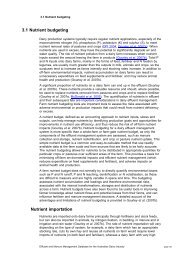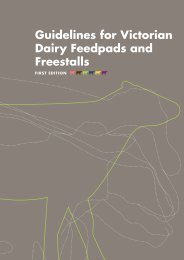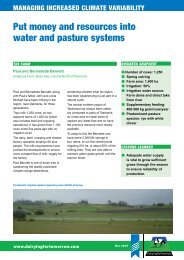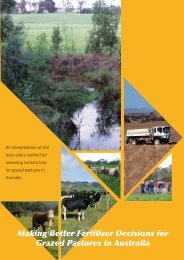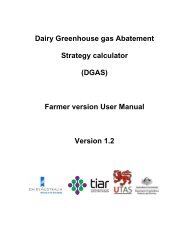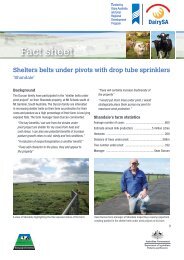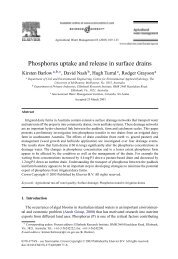Australian Dairy Industry In Focus 2009 - Dairying For Tomorrow
Australian Dairy Industry In Focus 2009 - Dairying For Tomorrow
Australian Dairy Industry In Focus 2009 - Dairying For Tomorrow
Create successful ePaper yourself
Turn your PDF publications into a flip-book with our unique Google optimized e-Paper software.
Expectations of growth in production<br />
The proportion of respondents expecting<br />
higher production in three years time<br />
has fallen from 61% in March to 32%<br />
in September – with growth expectations<br />
falling significantly across the key<br />
southern dairying regions.<br />
Among those who are expecting<br />
to increase production over the next<br />
three years, 33% attributed the anticipated<br />
increase to increasing herd size, 23%<br />
to seasonal improvements, 24% to feeding<br />
cows better and 19% to better genetics.<br />
Those who expected to reduce production<br />
cited more off-farm factors with the main<br />
driver being low milk price (54%).<br />
Challenges facing the local industry<br />
Milk price was (understandably) the<br />
greatest current and future challenge<br />
mentioned by farmers in <strong>2009</strong>; overtaking<br />
climate issues and the availability and<br />
cost of inputs.<br />
Figure 5<br />
Grain prices – $A/tonne<br />
500<br />
450<br />
400<br />
Barley – Vic<br />
Wheat – Vic<br />
Climate issues and the cost and availability<br />
of irrigation water were the next most often<br />
mentioned challenges – both for <strong>2009</strong> and<br />
the future.<br />
Meanwhile, the availability and cost of inputs<br />
were less of a challenge in <strong>2009</strong>. Grain<br />
costs have eased markedly in the current<br />
season with large northern hemisphere<br />
grain harvests, the strong <strong>Australian</strong> dollar<br />
pushing down international prices and<br />
greatly improved prospects for plentiful<br />
supply from a large local harvest towards<br />
the end of <strong>2009</strong>.<br />
World demand improves<br />
as economy recovers<br />
Asian countries are leading the recovery from<br />
the global economic downturn. This reflects<br />
less exposure to financial derivative products,<br />
improved banking systems following the<br />
region’s own financial crisis in the late-1990s<br />
and large fiscal stimulus packages.<br />
However, despite some positive economic<br />
signals, significant downside risks remain.<br />
Source: <strong>Australian</strong> Crop <strong>For</strong>ecasters<br />
350<br />
300<br />
$A/tonne<br />
250<br />
200<br />
150<br />
100<br />
50<br />
0<br />
Jan 05<br />
Apr 05<br />
Jul 05<br />
Oct 05<br />
Jan 06<br />
Apr 06<br />
Jul 06<br />
Oct 06<br />
Jan 07<br />
Apr 07<br />
Jul 07<br />
Oct 07<br />
Jan 08<br />
Apr 08<br />
Jul 08<br />
Oct 08<br />
Jan 09<br />
Apr 09<br />
Jul 09<br />
6<br />
<strong>Australian</strong> <strong>Dairy</strong> <strong><strong>In</strong>dustry</strong> <strong>In</strong> <strong>Focus</strong> <strong>2009</strong>



